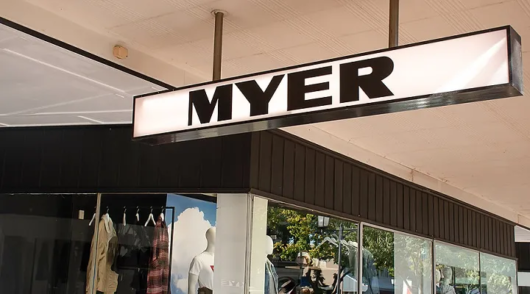Design can often be mistaken for decoration, a finishing touch applied once the real work is done. Yet in retail, design is more than what we see; it’s about how brands earn trust, meaning and emotion. Few brands embody that philosophy more convincingly than Scarlet, the Melbourne-born femtech brand whose wireless heat pad, Rae, has just been named product design of the year at the 2025 Australian Good Design Awards. That a small, self-funded period care label could outshine HP and
ne HP and Xbox in Australia’s most prestigious design competition reveals a cultural turning point, where empathy and engineering combine to reimagine how wellness, technology and retail co-exist.
From empathy to engineering
“I never went into this thinking about awards or even the commercial opportunity,” Scarlet founder Jo Barry told Inside Retail.
“I went in wanting to build a product that would help people have a better period. That’s it. That meant being relentless about every detail: form, function, safety and that perfect amount of heat.”
Self-funding, she added, was non-negotiable. “I didn’t want compromises, no investors telling me to cheapen the materials or rush the launch. It gave me the freedom to obsess and design something that actually worked and would last. Of course, it was terrifying. There were nights I lay awake wondering if I’d just gambled everything on a heat pad.”
Two decades living with stage-4 endometriosis became her blueprint. “There’s nothing like pain to sharpen your purpose. When people now compare Rae to global tech brands, I just think, good! Women’s health should be held to the same design standards as any other category.”
The art of disciplined simplicity
When Barry first briefed the idea, she was told it was “too simple” to win an award. “But that’s the irony of good design,” she says. “Simplicity is the hardest thing to achieve. Every curve, every material, every heat cycle took months of refinement. We stripped it back until only what mattered was left: comfort, safety and performance.”
The result is an object that feels inevitable, expressive and intimate. “People sometimes mistake minimalism for ease, but it’s the opposite. It takes discipline to make something feel effortless. That’s what people respond to. Not noise or novelty, but something that quietly works and makes their life better.”
Retail and brand specialist Nick Gray describes Rae as “a real act of cultural translation.”
“What Scarlet has achieved with Rae goes way beyond beautiful product design,” he said “What I love most is the merging of empathy with engineering and taking something that was once hidden in the bathroom and placing it confidently on the shelf. That’s not just good design, it’s good psychology.”
Barry recalls the collaboration with Melbourne engineering partners Xentronics and Trike as an 18-month immersion in problem-solving and feeling.
“We went through 16 prototypes, refining comfort, safety, and that balance between heat and wearability. I wanted something that performed like serious tech but felt like self-care.”
What surprised her most was how emotional the process became.
“I’d walk into a meeting and see how invested everyone was, not just in the product, but in what it represented. That’s what happens when empathy meets engineering; you stop designing for a demographic and start designing for a human experience.”
The psychology of shelf space
Rae’s visual language, smooth form, muted palette and tactile design cues invite the consumer to see relief within the beauty aisle rather than the pharmacy.
For retailers, this reframing is profound. When a product conveys confidence and sophistication, it migrates from a low-margin “health aid” to a high-margin “lifestyle object.”
“Rae was never meant to be another gadget,” Barry said. “It was designed to sit between beauty, wellness and lifestyle, something you’d be proud to have sitting next to your Dyson.”
Femtech has long fought for legitimacy in both retail and investment circles. “Every pitch meeting in the early days was a sea of men with one token woman added because ‘she’ll get it,’” Barry recalled. “But periods shouldn’t be a gendered concept.”
Her solution was to reposition Rae as lifestyle self-care rather than a medical device. “That’s where cultural change happens. When something moves from the medicine cabinet to the beauty shelf, that’s when the stigma starts to dissolve.”
Retail as emotional infrastructure
Winning Best in Class at the Good Design Awards may have surprised the team, but it’s also accelerated what comes next.
“We genuinely didn’t have a speech ready,” Barry recounted. “Retail is definitely on the radar. I’d love to see Rae in places like Mecca or Sephora—stores that merge design and self-care. Because once people touch it, they get it. The tactile experience sells itself.”
For now, Scarlet remains committed to e-commerce. “It gives us control over every touchpoint, the unboxing, the education, the tone. Growth is great, but maintaining brand integrity is everything.”
A series of pop-ups is planned for next year, and Rae 2.0 is already on Barry’s mind.
“Design is one of the most powerful forms of psychology we have,” said Gray. “Scarlet’s Rae shows how empathy and aesthetics together can reshape not just products, but really entire categories.”
For Barry, that philosophy defines the brand’s trajectory. Scarlet is proving that independent, design-led brands can compete on integrity rather than volume.







